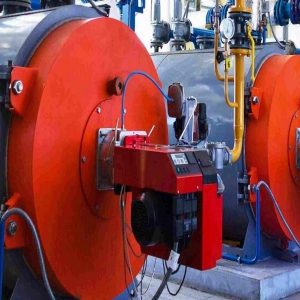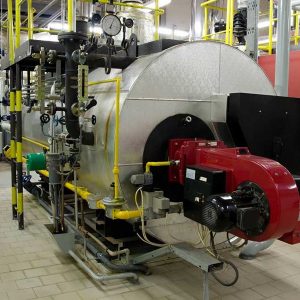Description
Types and modes of operation of the deaerator
Today, many industries and factories use various boilers and deaerators to heat water. The general applications of boilers are mainly related to water heating systems, central heating system, use in cooking equipment, sanitary systems such as pasteurization and of course use in boiler-based power generation systems.
The function of the boiler and deaerator
In this section, we will examine the function of the boiler and deaerator. The boiler is a metal container and insulated. Which conveys heat in a closed environment. And produces steam. Boilers play a key role in industries that intend to use indirect heat.
Of course, the boiler system has other uses as well, such as cleaning and disinfecting agent, stimulant agent, power transmitter and regulator of chemical processes. Water in the boiler system plays the role of blood and is the nourishing factor of the boiler.
It is interesting to know that water contains many soluble gases. Which can be very corrosive when circulating and interacting with boiler system components. In addition to these soluble gases, water also contains many soluble minerals that can cause highly harmful sediments within the system.
Iron in contact with water during a series of chemical processes causes the formation of carbonic acid, and water-soluble oxygen accelerates the process of corrosion and rust. For this reason, controlling the quality of water entering the boiler system is very important and necessary. This is where the deaerator comes in to remove oxygen and other gases from the feed water. By doing this, deaerators prevent the formation of oxides or rusting of system components.
There are two main types of deaerators:
1. Tray openers
2. Spray deaerators
Applications of deaerator
Deaerators are commonly used in conjunction with boilers and in industries where chemical processes take place or in industries related to electricity generation. These systems usually use a deaerator before the water enters the boiler to increase the quality of the feed water to the boiler and to prevent deposits and corrosion. Of course, deaerators also play an important role in preheating the water entering the boiler. Some important applications of deaerator are:
Use for high capacity boilers
Use in installations requires critical pressure
Thermal power plants
Elimination of various soluble gases from food products, personal care products and cosmetics
Increasing dose accuracy in the process of pharmaceutical products
Improving the disinfection and pasteurization process
What are the features of a good position to install a deaerator?
As you know, corrosion in boiler systems and fittings is one of the problems that different industries always complain about, but the interesting thing is that many of them also have a deaerator in their own system!
The reason for this is related to the location of the deaerator. If the boiler feed pump and the deaerator tank are installed at the same height level, the phase change process will not be done properly and this is where the system encounters the cavitation phenomenon which is very damaging. To solve this problem, the deaerator tank should be installed at a height of at least 3 meters from the inlet of the feed pump so that the system does not suffer from cavitation and damage caused by pressure drop.
How to install a deaerator and under what conditions is it more effective?
In addition to observing the height of the use of peripherals, which we will describe in the following, their performance can also have a great impact on the performance of the deaerator and increase the quality of water entering the boiler. The most important and effective items are:
1- Using automatic vent valve
To drain air and dissolved gases separated from the water, use an automatic air intake valve, which is the best place to install this valve where there is the highest amount of gases separated.
Of course, using a manual drain valve in the mentioned space and simultaneous draining for a few seconds by the operator also increases the efficiency of the deaerator.
2- Use of chemical compounds
Applying chemical compounds is a complementary – and in some cases costly – way to the deaerator. Chemical compounds eliminate gases and oxygen to a very high level and also regulate the pH of water. These residual oxygen compounds, which are not separated by the deaerator, are deposited at the water inlet so as not to damage the boiler.
3- Using a gradual automatic control valve in the water path
These valves measure the amount of change in the water level of the tank and control the amount of feed water entering the tank by gradually opening and closing. As a result of this control, the performance of the dehumidifier is improved and at the same time less fuel is used to produce steam, because the system will not face a sudden drop in temperature.
4- Safety valve
Installing a safety valve to protect against sudden increase in tank pressure can increase the life of the deaerator and prevent possible damage due to malfunction of the steam valve.
Conclusion
In this article, we described the function and application of deaerator and also examined the factors affecting this performance. In the end, we hope you enjoyed this article and took advantage of it.




Reviews
There are no reviews yet.